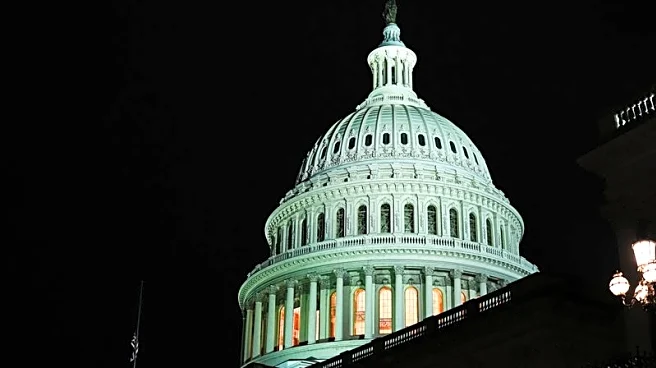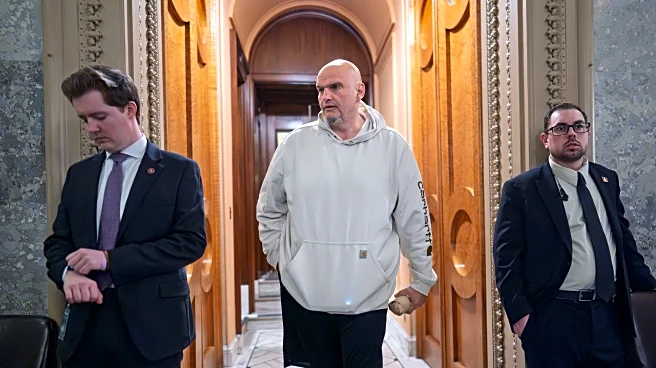What's Happening?
The Senate has passed a bill to end the longest government shutdown in U.S. history, which is now headed to the House for a final vote. The shutdown has had significant economic repercussions, with the Congressional Budget Office estimating a loss of
$11 billion if it ends at the six-week mark. If extended by two more weeks, the economic cost could rise to $14 billion. The Senate vote saw a group of centrist Democrats and one Independent join Republicans, causing division within the Democratic Party. The bill, which has President Trump's approval, aims to fund several federal agencies through the fiscal year, while others will be funded only until January 30, 2026. The House is expected to vote on the bill soon, potentially ending the shutdown.
Why It's Important?
The shutdown has had widespread economic impacts, affecting federal workers, small businesses, and various government programs. Approximately 670,000 federal workers are furloughed, and 730,000 are working without pay, leading to reduced consumer spending. The Supplemental Nutrition Assistance Program (SNAP) funding was suspended, affecting 42 million Americans. Small businesses have been denied access to loans, resulting in a loss of $4.5 billion in capital. The travel industry has suffered due to flight cancellations, with an estimated $2.6 billion loss over six weeks. The housing market has also been disrupted, with stalled closings and reduced sales activity.
What's Next?
If the House passes the bill, the government will reopen, but the economic recovery may be slow. Federal agencies will face backlogs in processing transactions, particularly in the housing market. Local economies with high concentrations of federal workers may experience a lag in recovery. The SNAP program will be funded through next September, potentially boosting economic activity among recipients. However, the long-term effects of the shutdown, such as lost productivity and income, may continue to impact the economy.
Beyond the Headlines
The shutdown has highlighted vulnerabilities in government funding mechanisms and the reliance of various sectors on federal support. The political divisions within the Democratic Party may have long-term implications for future negotiations and policy decisions. The economic impact on federal workers and contractors underscores the importance of stable government operations for local economies.















